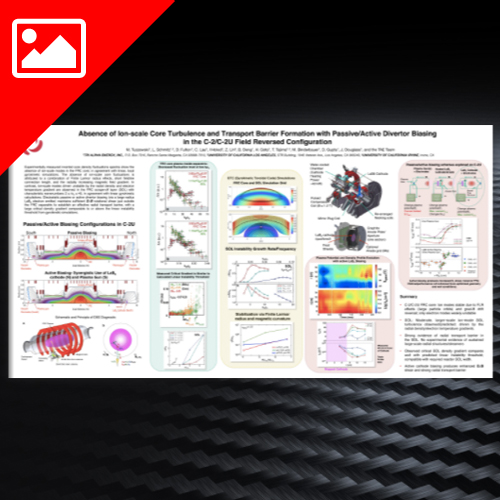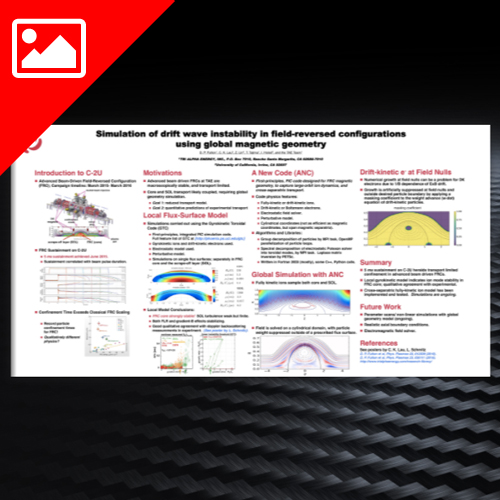
May 2017 | Research Library, Posters, Diagnostics, Experiment, Fusion Energy, Fusion Research, Fusion Science, Fusion Technology, Plasma Research
May 2017 | A. Necas | The Sherwood Fusion Theory Conference | Poster
C-2U is a unique hybrid field-reversed configuration (FRC) where we successfully combine a high-beta (~1) FRC plasma with neutral beam injection (NBI), field line biasing, and mirror physics.

Dec 2016 | Research Library, Papers, Diagnostics, Edge Control, Experiment, Fusion Energy, Fusion Research, Fusion Science, Fusion Technology, Stability, Transport, Turbulence
December 2016 | L. Schmitz | Nature Communications | Paper
An economic magnetic fusion reactor favours a high ratio of plasma kinetic pressure to magnetic pressure in a well-confined, hot plasma with low thermal losses across the confining magnetic field.

Oct 2016 | Research Library, Posters, Fusion Energy, Fusion Research, Fusion Science, Fusion Technology, Overview, Plasma Research, Turbulence
October 2016 | Michel Tuszewski | APS-DPP | Poster
Experimentally measured inverted core density fluctuations spectra show the absence of ion-scale modes in the FRC core, in agreement with linear, local gyrokinetic simulations.

Oct 2016 | Research Library, Posters, Fusion Energy, Fusion Research, Fusion Science, Fusion Technology, Plasma Research, Simulation, Turbulence
October 2016 | Calvin K Lau | APS-DPP | Poster
Advanced beam-driven FRCs at TAE have lifetimes of milliseconds (transport-limited regimes). Local GTC simulations of realistic C-2 equilibrium find…

Oct 2016 | Research Library, Posters, Fusion Energy, Fusion Research, Fusion Science, Fusion Technology, Plasma Research, Simulation, Turbulence
October 2016 | D.P. Fulton | APS-DPP | Poster
5 ms sustainment on C-2U heralds transport limited confinement in advanced beam driven FRCs.




